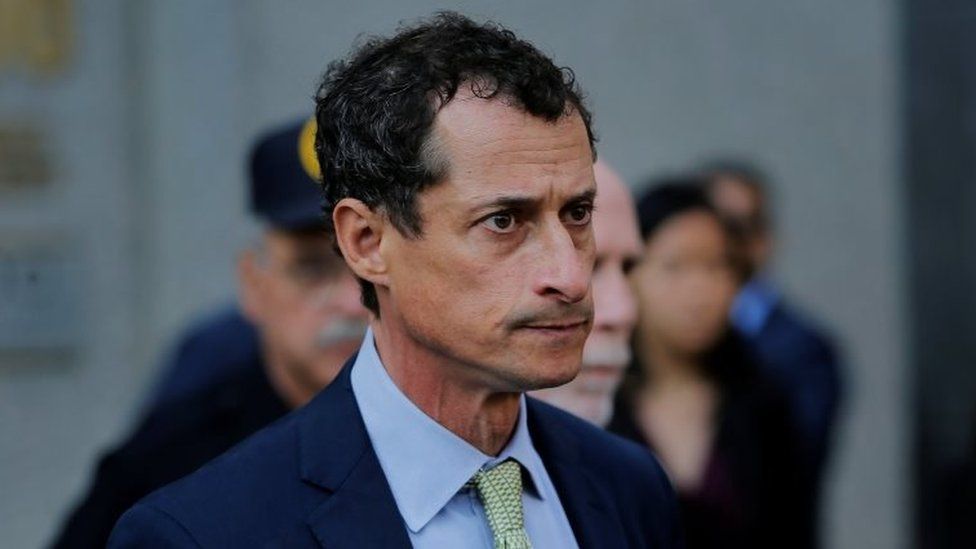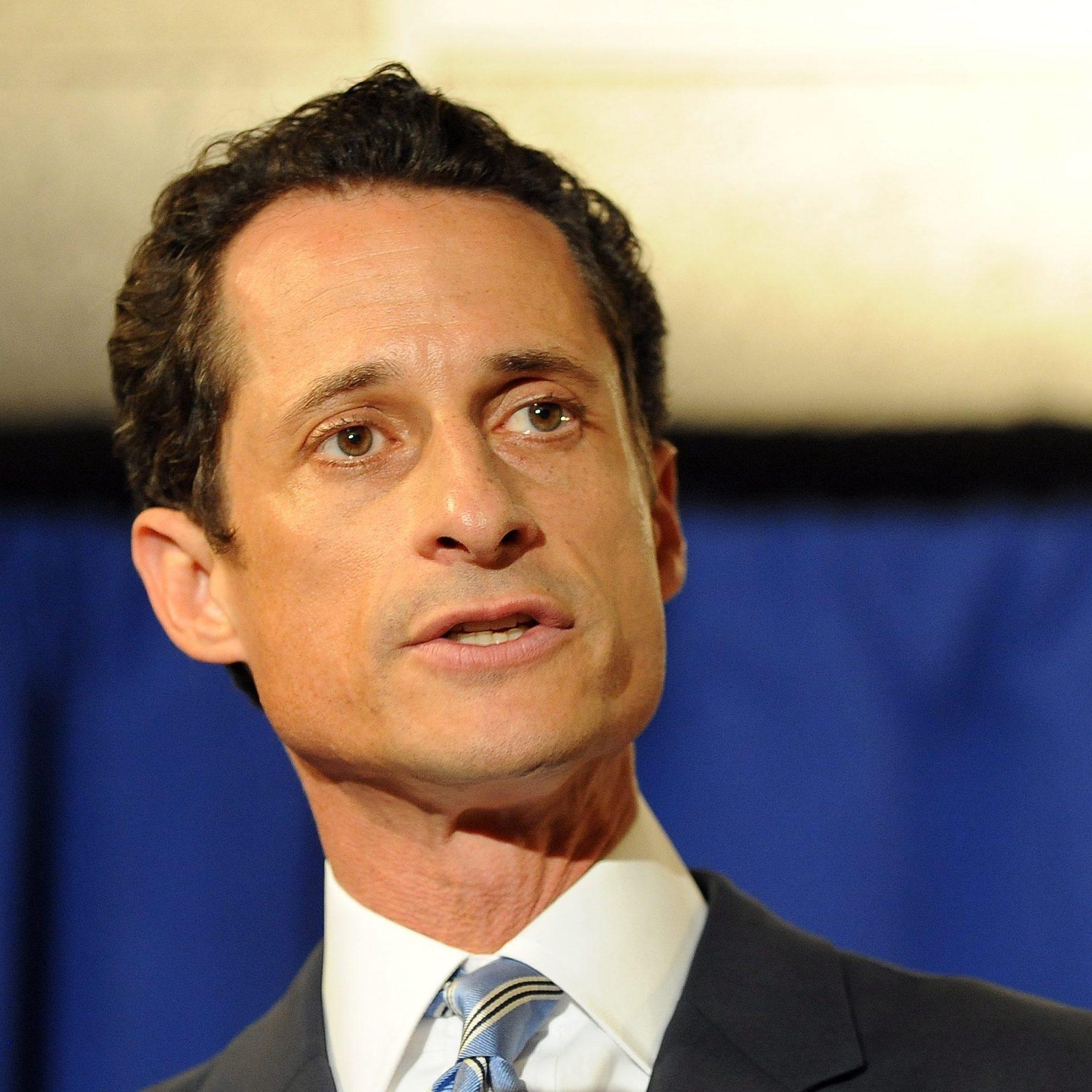What does the 2013 image of a U.S. Representative represent, and why is it significant?
The image in question, depicting a specific individual and a particular object, became a focal point in a political scandal. It is remembered for its pivotal role in generating public attention to issues of ethical conduct and personal responsibility in public office. The image's impact stems from its symbolic representation of a specific event, triggering media coverage, debate, and ultimately, political ramifications.
This image's significance lies in its ability to encapsulate a moment of profound ethical challenge and personal transgression, impacting the individual's public life and political career. The ensuing controversy underscored the potential for personal actions to have far-reaching consequences in the public sphere. The incident also highlighted the power of digital media in disseminating information and triggering public discourse.
- Embracing The Day Good Morning Blessings And Prayers Bible Verses
- Understanding The Role Of Fats In Elephants A Comprehensive Guide
| Name | Role | Relevant Dates/Events |
|---|---|---|
| Anthony Weiner | U.S. Representative (and later, other political roles) | 2013: Controversy surrounding the image. |
Further exploration into this particular event can illuminate broader themes of ethical standards in politics, the evolving nature of media coverage, and the relationship between personal behavior and public trust. This context, in turn, is relevant to the development of public awareness and political discussion.
Anthony Weiner's Image
The 2013 image of Anthony Weiner became a significant event in U.S. politics. Analyzing its key facets reveals its lasting impact.
- Public image
- Political career
- Media attention
- Ethical conduct
- Trust in leadership
- Digital age impact
The "Weiner photo" exemplified the interplay between public image and political reality. Its impact on Weiner's political career was profound, highlighting how a single image can trigger significant media attention and erode public trust. This event underscores the importance of ethical conduct in public office and the pervasive influence of digital media in modern political landscapes. It serves as a reminder of how personal actions can have far-reaching consequences, echoing across the public sphere.
- Ethan Shapiro A Dangerous Son Unveiled
- Understanding The Kenmore Washer Spin Cycle Not Working Troubleshooting Guide
1. Public Image
Public image, a crucial component of political and public life, often hinges on perceived trustworthiness and ethical conduct. In the case of Anthony Weiner's career, the 2013 image played a pivotal role in altering his public image. The image's dissemination irrevocably fractured public trust, leading to a significant erosion of his perceived credibility. The incident illustrated a direct causal link: personal actions, through the lens of media exposure, can dramatically reshape public perception. This is not an isolated phenomenon; historical examples abound where similar events irrevocably damaged reputations and careers.
The image's impact extended beyond immediate political repercussions. The case highlights the complex interplay between individual behavior, media coverage, and public perception. The digital age accelerated this dynamic; rapid dissemination of information amplified the image's impact, transforming a private moment into a public scandal. The incident underscored how easily a single image can dismantle carefully constructed public personas. This understanding is crucial in both personal and public life, emphasizing the importance of ethical considerations and the far-reaching consequences of actions in a highly visible, and instantly communicable, environment.
In conclusion, the "Weiner photo" serves as a potent example of how public image can be irreparably damaged by actions perceived as unethical. The rapid dissemination of information in the digital age magnifies the impact of such events, demanding heightened awareness and responsibility in all spheres of public life. This understanding is essential for individuals in public roles, demanding meticulous consideration of their actions, given the immediate and sustained effect on their public image.
2. Political Career
Anthony Weiner's political career, once promising, took a dramatic turn following the dissemination of the 2013 image. This event served as a stark illustration of how a single, seemingly personal act can have far-reaching consequences on a public figure's political trajectory. Analyzing the connection between this incident and his career reveals crucial facets of political life.
- Impact on Public Trust
The image deeply eroded public trust. This breakdown of faith is a critical element of a political career. Sustained public trust is essential for effective governance. The incident demonstrated how swiftly a perceived breach of ethical standards can fracture public support, impacting political standing and future prospects. This applies across various political figures and contexts.
- Media Scrutiny and Reputation Management
The image's rapid dissemination through media channels highlighted the heightened scrutiny faced by public figures. Effective reputation management became paramount. The case underscores the importance of proactive strategies to address potential controversies, particularly in a digital age characterized by instantaneous information dissemination. Failure to adequately manage potential crises can lead to irreparable damage in political careers.
- Political Strategies and Campaign Dynamics
The event's impact reverberated through campaign strategies and subsequent political actions. It underscored the importance of considering potential negative impacts of actions and their dissemination through media channels. This incident profoundly influenced subsequent political campaigns, shaping strategies and responses to potential crises. This incident altered the political landscape, impacting future political engagement.
- Ethical Considerations in Public Office
The case underscored the crucial importance of ethical behavior in public office. It highlighted the need for rigorous standards and high ethical conduct, especially with the public's scrutiny. Such events are important reminders for political leaders about maintaining the necessary ethical standards, given the influence public figures wield. This incident illustrated how seemingly personal actions can have significant ramifications for public policy.
In conclusion, the "Weiner photo" served as a case study in how actions outside the political realm can significantly impact a career in public office. The incident underscored the pivotal role of public trust, ethical conduct, and the dynamics of media scrutiny in the modern political arena. The event's impact continues to influence strategies, policies, and standards regarding public figures and the political process, offering a cautionary tale and a powerful illustration of potential ramifications.
3. Media Attention
The 2013 image of Anthony Weiner became a defining moment due to the intense media attention it generated. The image, disseminated rapidly across various media platforms, acted as a catalyst for extensive coverage. This intense focus, fueled by the image's inherent salience and the ongoing political context, underscored the transformative power of modern media in political landscapes. The media's role was multifaceted, encompassing reporting, public commentary, and the shaping of public perception.
The case of Weiner illustrates the direct correlation between media attention and the public's perception of political figures. The image served as a powerful symbol, triggering a cascade of news stories, social media discussions, and public commentary. This rapid and widespread dissemination, characteristic of the digital age, amplified the image's impact, transforming a potentially private matter into a significant public controversy. Subsequent coverage further explored the ethical implications and personal consequences arising from the image and its public exposure. Other examples show similar patterns how swift and extensive media coverage can drastically alter public perception and impact political careers.
Understanding the connection between media attention and such events is crucial for comprehending the dynamics of modern politics. The speed and scale of information dissemination in the digital age can significantly amplify personal actions, creating potentially profound consequences for public figures. This highlights the importance of responsible media practices and the need for nuanced consideration of the implications of public exposure. The case of Anthony Weiner serves as a powerful example of the interaction between personal conduct, media coverage, and political life, shaping public discourse and, ultimately, influencing public opinion.
4. Ethical Conduct
The image of Anthony Weiner, central to a significant political controversy, directly illuminates the crucial role of ethical conduct in public life. Ethical conduct is not merely a desirable trait; it's a foundational element of trust, accountability, and effective governance. The case underscores how a perceived lapse in ethical standards can dramatically impact public perception and political careers. This analysis examines key facets of ethical conduct as they relate to the broader context of the image and its consequences.
- Public Trust and Reputation
Ethical conduct is inextricably linked to public trust. A public figure's actions, regardless of their private life, are constantly scrutinized. The image in question, and the events surrounding it, became a stark reminder of how a single action, perceived as unethical, can erode public trust and damage the reputation painstakingly built over time. The incident highlighted the delicate balance between personal life and public persona in the context of high office.
- Accountability and Transparency
Ethical conduct necessitates accountability and transparency. The controversy surrounding the image highlighted the importance of being accountable for one's actions, both in public and private. The lack of transparency surrounding the image and the subsequent events contributed to the erosion of trust. Accountability, however, extends beyond just acknowledging a mistake; it requires taking responsibility for actions and outlining measures to prevent future occurrences.
- Standards of Conduct in Public Office
Public office demands a higher standard of conduct. Individuals serving in public roles are often subjected to intense scrutiny, and ethical dilemmas frequently arise. The event served as a potent reminder of the critical need for strong ethical standards within public office, reflecting a wider discussion surrounding professional conduct and responsibilities. The case emphasized the importance of upholding the highest moral standards, even when facing personal challenges.
The "Anthony Weiner" image, and the wider controversy it engendered, stands as a powerful example illustrating the interconnectedness of ethical conduct, public trust, and political careers. The case highlighted not only the damage caused by a perceived lapse in ethical standards but also the crucial importance of maintaining those standards in all aspects of public life. The implications extend far beyond the individual, influencing public discourse and shaping future expectations of ethical conduct in political and public roles.
5. Trust in Leadership
The image of Anthony Weiner, and the ensuing scandal, significantly impacted trust in leadership. Public trust is a cornerstone of effective governance; its erosion can have profound political and social consequences. Examining how the incident affected trust in leadership reveals critical aspects of this relationship.
- Erosion of Public Confidence
The image, and the events surrounding it, directly undermined public confidence in Weiner's leadership. This erosion extended beyond him to broader notions of trustworthiness in public figures. Individuals holding public office often face scrutiny, and perceived breaches of ethical conduct can damage the public's faith in leaders at all levels of government. Such events frequently become markers for wider societal distrust in established institutions.
- Impact on Political Processes
The fallout from the image altered the dynamics of political discourse and engagement. Concerns about the transparency and accountability of political figures intensified. The event became a focal point for discussions about the relationship between personal conduct and public office. Subsequent political campaigns and elections, often influenced by the image's impact, demonstrated the tangible effects of eroded public trust.
- Shifting Public Expectations
The scandal and subsequent media coverage subtly shifted public expectations of political leaders. A greater emphasis on personal responsibility and ethical conduct emerged. The incident forced a reassessment of standards for political behavior, with an amplified focus on accountability. This heightened awareness, however, also fostered a complex debate about the balance between private life and public scrutiny. The example became a reference point for future discussions.
- Impact on Media and Social Media
The rapid dissemination of the image via media outlets and social media platforms amplified the controversy's impact. The incident emphasized the rapid and potent way in which information can spread, highlighting both the benefits and the perils of this instantaneous connection. The event showcased the influence of social media in shaping public opinion and influencing political discourse. Further, the event altered media strategies and the ways in which news organizations handled such sensitive political issues.
In conclusion, the "Weiner photo" served as a potent demonstration of the fragile nature of trust in leadership. The erosion of public trust following the incident affected political processes, shifted public expectations, and highlighted the powerful influence of modern media. The event remains a cautionary example of how actions, perceived or real, can erode trust in leadership at multiple levels and across diverse contexts.
6. Digital Age Impact
The 2013 image of Anthony Weiner, now often referenced as a singular event, was profoundly shaped by the digital age's characteristics. The rapid dissemination of the image across digital platforms was a key factor in its explosive impact. Social media's ability to instantly share and amplify content dramatically escalated the incident's visibility and consequence. This unprecedented speed of information flow was a crucial element in transforming a potentially private matter into a major political scandal.
The case of Weiner highlights the digital age's influence on political discourse and the management of reputation. The image's widespread circulation demonstrated how a single online posting could trigger a cascade of events, altering public perception and political careers with remarkable speed. This case study transcends the individual; it showcases how the digital landscape has fundamentally reshaped the relationship between individuals, public figures, and the political process. Examples abound where similar events, potentially isolated, become nationally recognized controversies due to swift digital dissemination.
Understanding the digital age's impact on events like the Weiner image is crucial for comprehending modern political landscapes. The speed and reach of digital platforms require individuals and institutions to develop new strategies for managing public image, mitigating reputational risks, and navigating the ethical implications of digital communications. This understanding is vital for politicians, public figures, and even ordinary citizens, emphasizing the importance of responsible digital conduct and awareness of the broad consequences of online actions. Failure to acknowledge the digital age's impact leaves individuals vulnerable to swift and severe reputational damage.
Frequently Asked Questions about the 2013 Anthony Weiner Image
This section addresses common inquiries regarding the 2013 image involving Anthony Weiner, emphasizing factual clarity and historical context.
Question 1: What was the significance of the image in relation to Anthony Weiner's political career?
The image, widely circulated in 2013, marked a turning point in Weiner's political career. Public reaction, fueled by widespread media coverage, significantly eroded public trust and ultimately led to the cessation of his political aspirations. The incident demonstrated the potent influence of digital dissemination in contemporary politics and the vulnerability of public figures to swift and extensive reputational damage.
Question 2: How did the rapid dissemination of the image through digital channels impact the event's trajectory?
The digital age dramatically accelerated the image's impact. Social media and other digital platforms facilitated instantaneous global distribution, amplifying the controversy and contributing to a rapid decline in public trust. This showcased the speed and scope of modern communication in shaping public opinion.
Question 3: What are the broader implications of this event for ethical standards in public office?
The controversy served as a stark reminder of the importance of ethical conduct in public office. It highlighted the need for a higher standard of conduct, emphasizing the potential consequences of actions that compromise public trust. The incident spurred broader discussions on the responsibility of public figures and the intersection of personal and professional lives.
Question 4: How did media coverage of the image contribute to the public's perception of the event?
Extensive media coverage, fueled by the image's distribution, significantly shaped the public narrative. The ongoing reporting and analysis played a critical role in defining the controversy's scope and ultimately influencing public opinion. The media's role in disseminating information and interpreting events is crucial in modern public discourse.
Question 5: What were the long-term consequences of the incident regarding trust in political leaders?
The event raised concerns about trust in political leadership, underscoring the fragility of public confidence in the face of perceived ethical lapses. The incident served as a potent example illustrating the lasting impact of public controversies on the public's perception of political figures and institutions.
The aforementioned questions and answers highlight the significance of the 2013 image in the context of contemporary political discourse, emphasizing the factors that influenced the event and its broader implications. The case study underscores the complex interplay of personal conduct, media coverage, and digital dissemination in the modern political landscape.
Moving forward, these considerations are essential for future public figures and institutions. Such understanding is integral for building robust strategies and addressing issues of ethical conduct and public image in an increasingly interconnected world.
Conclusion
The 2013 image involving Anthony Weiner serves as a significant case study in the modern political landscape. The event's impact stemmed from the rapid dissemination of information through digital channels, dramatically altering public perception and political careers. Key aspects explored include the erosion of public trust, the intensity of media scrutiny, and the profound implications of ethical lapses in public office. The incident highlighted the vulnerability of public figures to swift and widespread reputational damage in the digital age, prompting critical examination of ethical standards in the public sphere.
The case study underscores the necessity for a heightened awareness of the potential consequences of actions, especially for individuals in positions of public trust. The event's long-term effectsincluding the shift in public expectations of political leadersremain relevant in contemporary political discourse. Understanding the interplay of personal conduct, media coverage, and digital technology is essential for navigating the intricacies of public life in a rapidly evolving digital environment. The lessons learned from this incident are invaluable for policymakers, public figures, and citizens alike, emphasizing the imperative of ethical decision-making and responsible communication in the modern era. The 2013 incident continues to be a salient reminder of the potentially devastating consequences of actions that compromise public trust.
- Understanding The Verilog Or Gate A Comprehensive Guide
- Compassionate Care For Your Furry Friends Schuylkill Vet


